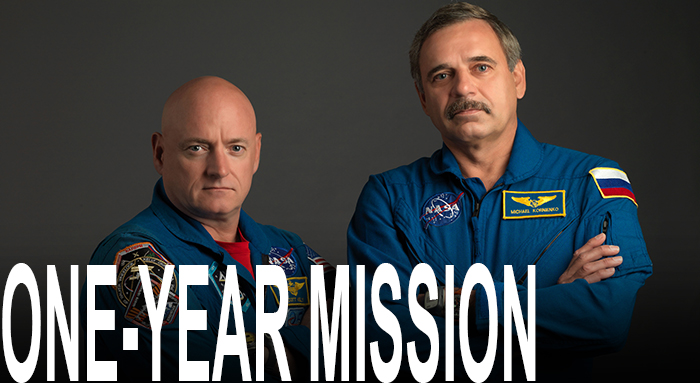CANAVERAL, Fla. – An American astronaut and Russian cosmonaut are just two months from launching to the International Space Station for an entire year. Scientists already are clamouring for additional long-term subjects.

Scott Kelly and Mikhail Kornienko will rocket into orbit in late March from Kazakhstan. It will be the first time NASA sends someone into space for 12 months.
Russian cosmonaut Valery Polyakov holds the longest record in space at 437 days on the Russian space station Mir from January 1994 to March 1995.
Two people are not enough from a scientific perspective, NASA’s space station program scientist, Julie Robinson, said Thursday. The space agency wants to start collecting data from Kelly and Kornienko before making decisions on further one-year missions, she said.
READ MORE: NASA astronauts back in space station’s U.S. segment after evacuation
Before committing to lengthy trips to Mars and elsewhere, NASA wants to learn how the body fares after a year in space. NASA space station stints typically last six months.
NASA and its partners — Russia, Europe, Japan and Canada — are considering as many as 12 one-year test subjects at the space station. All but Russia are new to such long orbital hauls.
Medical and technological breakthroughs since Russia’s yearlong missions from the 1980s and 1990s means even more will be learned this time around, according to Robinson. The two sides will collaborate on many of the experiments.
Kelly will provide an especially unique set of data. His blood and urine samples, as well as other measurements, will be compared with those from his identical twin brother, Mark, a retired astronaut.
Last week, space station program manager Mike Suffredini said NASA may wait until commercially developed crew capsules are ready to launch astronauts from U.S. soil before building on Kelly and Kornienko’s flight. That won’t happen before 2017 or 2018. SpaceX and Boeing are the two chosen contractors.
Since the retirement of the U.S. space shuttle fleet in 2011, Russian Soyuz spacecraft have served as the only means to ferry crew to and from the space station.

Comments